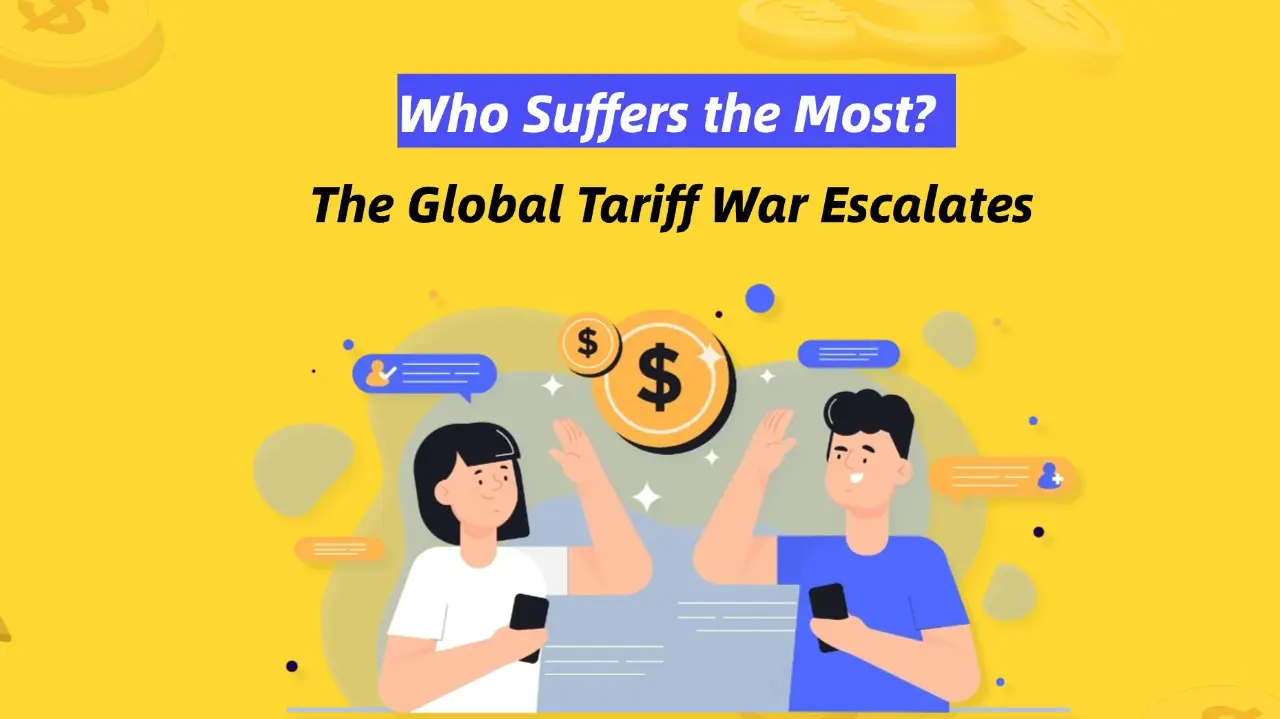简体中文
繁體中文
English
Pусский
日本語
ภาษาไทย
Tiếng Việt
Bahasa Indonesia
Español
हिन्दी
Filippiiniläinen
Français
Deutsch
Português
Türkçe
한국어
العربية
Gold Has Really Skyrocketed—Could Trump Continue to Fuel the Surge?
Abstract:Trump's latest move to impose tariffs has caused turbulence in global markets, with gold surpassing the $2900 mark. However, with Trump further pressuring Iran and trade partners, how long will gold continue to rise and how high will it go?

On February 11, gold prices continued their record-breaking upward trend, first surpassing the $2900 mark, reaching a high of $2911.42 per ounce, and setting a new all-time high. Gold closed at $2907.92 per ounce, up about 1.6%.

The rise in gold prices was primarily driven by safe-haven demand, and U.S. President Trump's new tariff threats heightened concerns over trade wars and inflation, further pushing gold prices higher.
According to reports, Trump plans to sign two major tariff executive orders within 48 hours. First, he will impose a 25% tariff on all imported steel and aluminum, implementing what is called the “metal defense tax.” Second, Trump will launch a “mirror retaliation” plan targeting various countries. This series of trade offensives has been likened to throwing a depth charge into the global market, quickly triggering emergency responses from countries, and causing financial markets to become volatile.
Sources revealed that Trump is expected to sign the relevant executive orders later on Monday or Tuesday, which could increase the risks of multilateral trade wars and further exacerbate global economic uncertainty.
By adding another 25% tariff on steel and aluminum, Trump is creating a “tariff stacking effect.” This policy will further raise trade barriers, particularly in the areas of steel and aluminum imports.
Policy Impact
The U.S. dollar index may rise initially due to safe-haven demand, but as retaliatory tariffs weaken U.S. export competitiveness, the dollar could retrace some of its gains. In contrast, gold, as a safe-haven asset, will benefit from two advantages. The dual pressures of geopolitical risks and rising manufacturing costs could push gold prices beyond $3000 per ounce.
Additionally, global supply chains may be profoundly affected, with multinational companies potentially accelerating the “nearshoring” process, which would further drive up precious metal prices, creating a resonance between industrial and financial attributes.
Disclaimer:
The views in this article only represent the author's personal views, and do not constitute investment advice on this platform. This platform does not guarantee the accuracy, completeness and timeliness of the information in the article, and will not be liable for any loss caused by the use of or reliance on the information in the article.
Read more

WikiFX "3·15 Forex Rights Protection Day" – Official Release of the Blacklist
WikiFX, as a globally leading forex investment ecosystem service platform, has always been committed to providing fair and authoritative broker verification services for forex investors, while offering solid rights protection support for every victim of forex investment. On February 26, 2025, WikiFX once again launched its annual "3·15 Forex Rights Protection Day" event, aiming to empower forex investors to speak out and defend their rights through open, transparent, and robust means.

Nigeria’s Oil and Gas Sector Gains Momentum
Nigeria’s oil and gas industry is experiencing a surge in investment, fueled by policy reforms and international collaboration, paving the way for continued energy expansion.

The Global Tariff War Escalates: Who Suffers the Most?
The global trade war is intensifying as countries continue to raise tariffs, aiming to protect their own economies while creating greater market uncertainty. In this tit-for-tat game, who is truly bearing the brunt?

Immediate Edge Review 2025: Is it safe?
Launched in 2019, Immediate Edge claims to be an automated cryptocurrency trading platform using AI technology for crypto trading services. The platform requires a minimum deposit of $250 to begin trading, which is relatively expensive for many investors. During its short operation, Immediate Edge failed to establish a positive reputation. The platform has undergone frequent domain changes and has repositioned itself as an intermediary connecting users with investment firms—a move that appears designed to obscure its actual operations. Immediate Edge restricts services to investors from the United States; it remains accessible to users in other regions.
WikiFX Broker
Latest News
FINRA Panel Orders Stifel to Pay $132.5M for Misleading Investors
The Future of Trading is Here: How AI is Reshaping the Market Landscape
Nigeria’s Oil and Gas Sector Gains Momentum
How to Avoid Risks from Scam Brokers in Forex Investment
Gold Price Hits Record High Amid Economic Uncertainty and Policy Shifts
Could DeepSeek Be Linked to a $390 Million Fraudulent U.S. Server Deal?
Ripple Secures Dubai License: First Blockchain Payments Provider in DIFC
BSP Restricting Offshore Forex Trades to Control Peso Volatility
Retiree Loses RM2.33 Million in Investment Scam – Could You Be Next?
Will Trump's Trade Policies Fuel Inflation? BlackRock Warns of Economic Risks
Currency Calculator






